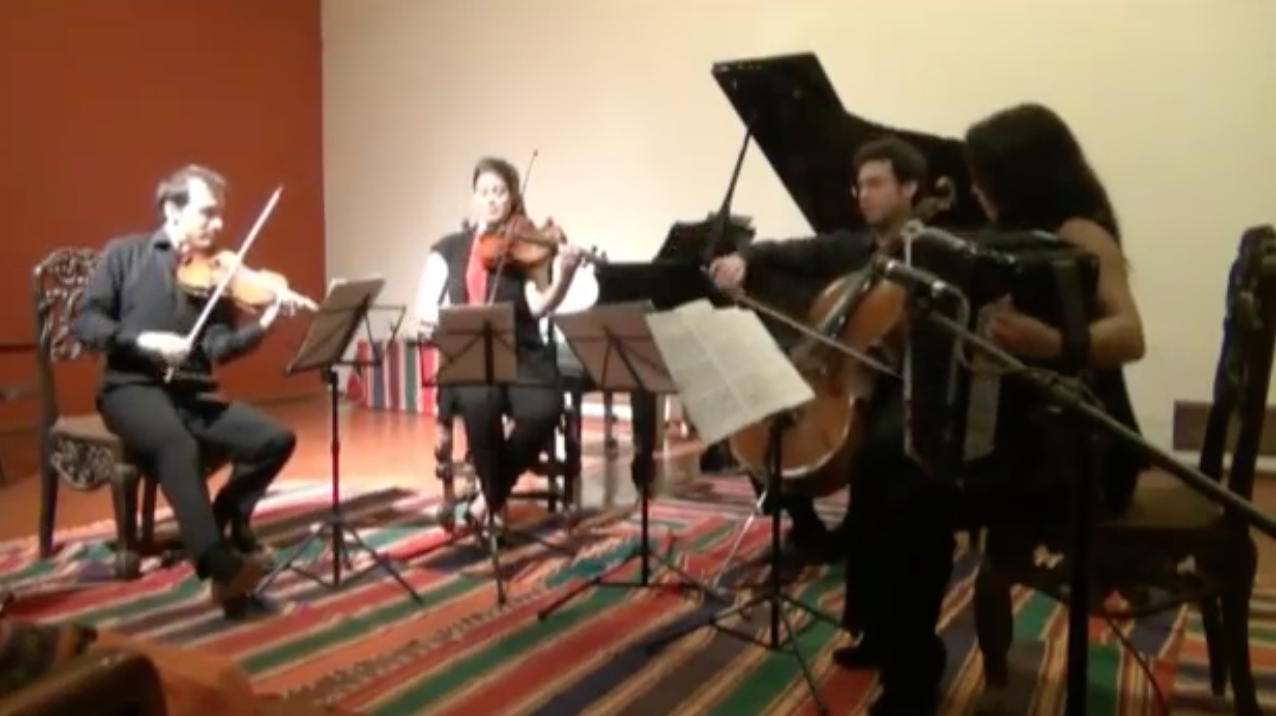Arties Chamber Ensemble performs at Art Chamber, Goa (14/03/15)

Mahler’s one-movement Piano Quartet in A Minor was composed during Mahler’s days as a student in 1876. In this piece, especially in the very beginning, there was this strong,familiar flavour of Metamorphosis by Philip Glass. I won’t be surprised if Glass was inspired by Mahler’s work to jot down his idiosyncratic, minimalist piece.

In this performance also, one could trace the idiosyncrasy that lay the stepping stone to later aspects of Mahler’s musical styles. Even at the cost of a disguised beautiful calmness in the melody, the key of A Minor portrays an underlying darkness, over-arching the music.
There were instances where the violinist, violist and the cellist tore into their respective fingerboards with extreme intensity,accompanied by whirlwind, playful playing by the pianist. This was evident in the sudden, upward climb in harmonic progression striving towards a resolution where the music never ultimately reaches anywhere, but rather on an asymptote seeking for fulfillment and completion. The performance started with calmness around the concert hall but gradually it builds into a storm, which was evident in the development section.
The main theme was delivered by the pianist and returned en force in the recapitulation section. The sound of the piano sounded a bit dry with regard to the acoustics, a tadlackluster with less clarity and henceforth her efforts to bring out the deep sound within the piano keys took a backseat. The violinist took the center stage during the stormy intense solo for almost 20 seconds in the end but that was equally supported by the acuity in tonal balance of the violist and the cellist.
All throughout the performance, there was a feeling of storm, followed by a disturbing calmness and ended with a idiosyncratic apocalypse. This performance came, saw and conquered. In a nutshell, it was a stunning and befitting display of Mahler’s one-movement Piano Quartet in A Minor.
A bagatelle could be defined as a short piece of music written for the piano with a light, mellow character. Although bagatelles are generally written for solo piano, they have been successfully written and produced for harp, organ, harpsichord, vibraphone, violin, viola and many other instruments. Sometime at the beginning of May 1878, these Bagatelles were composed in a matter of 12 days by Antonin Dvorak. The scoring is comprised of an unique ensemble of two violins, cello and harmonium (a mid-nineteenth century reed organ). These bagatelles are short, simple and flexible. The main theme of the set, which is the opening of the folksong “Hraly Dudy” is most clearly heard at the beginning of the first and the third movements. In this performance, there has been plenty of contrast, which includes an instantly infectious and intimate rhythm. The speed of the composition is utterly pragmatic with a well-characterised, deliberately old-fashioned minuet and a lyrical slow movement. Mostly the close canon between first violin and cello was evident in the performance and the motto theme holds it together nicely as a well balanced whole, tuneful and surprisingly detailed in timbre, dynamics and articulation. Although these Bagatelles are short and sweet, the entire conception and execution of the music is aimed directly towards home performance among family and friends which was successfully portrayed by the Arties Chamber’s beautifully decorated and ornate ensemble performance.





